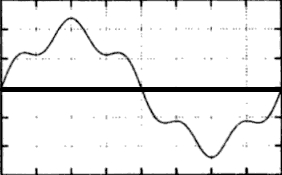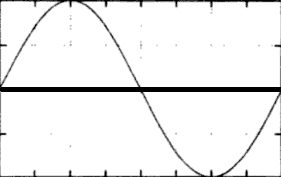Introduction
Presence of Harmonics in electrical circuits over the years has become one of the most important areas of concern for almost all the utility companies world over. Keeping harmonic levels as minimum as possible is extremely important for healthy grid operations. Let us examine the aspect of Harmonics in detail.
What is Harmonics?
We all know that the electricity generated and distributed takes a sinusoidal wave form. This wave form is generated at a frequency of 50 cycles / second (or 50 Hz). It is also known as main/fundamental frequency waveform. This is the ideal waveform that is suitable for smooth operations of various electrical equipments, appliances connected to the grid.
However, due to various reasons that will be discussed in next section, this pure sinusoidal waveform gets distorted. Additional waveforms (unwanted) get added on top of the fundamental sinusoidal waveform. A Fourier Analysis of these waveforms reveal that these waveforms are in multiple of the fundamental sinusoidal waveform frequency of 50 Hz. These frequency components that have higher frequencies than fundamental frequency are called “Harmonics”.
Figure below shows Fundamental Sinusoidal waveform and an example of distorted waveform containing harmonic component:

Distorted waveform with harmonics

Sinusoidal waveform
Based on the frequency multiple of the harmonic, the harmonic waveforms are named as:
3rd Harmonic (150 Hz), 5th Harmonic (250 Hz), 7th Harmonic (350 Hz) etc.
Sources of Harmonics
Harmonics are generated by various electrical equipments connected to the electrical grid.
These equipments include:
- Arc Furnaces
- Electric welding machines
- Thyristor controlled devices like Variable Speed Drives, Soft Starters, Rectifiers
- In some cases transformers, rotating machines
- Elevators, Inverters, UPS, Battery Chargers
Adverse Effects of Harmonics
Presence of harmonics is not good for both utility operators as well as individual customers. Various adverse effects of Harmonics are as follows:
- Increased losses due to distorted waveform. Equipments may get overheated. E.g. transformer overheating, increased losses due to harmonics
- Some of the precision electrical equipments like relays may fail to perform accurately as they are calibrated to work with fundamental waveform at rated values. Harmonics cause false conditions and may lead to equipment malfunction
- Capacitors may get overloaded and may lead to failure
- Undesirable resonance effect seen between inductive and capacitive components
- Interference in communication lines and devices
- Due to introduction of harmonics it may generate irregular voltage and current values in the grid and may unnecessarily increase overall demand in utility grid.
This in turn puts strain on the network
Controlling Harmonics
Presence of harmonics is not good for both utility operators as well as individual customers. Various adverse effects of Harmonics are as follows:
- Limiting non linear load devices (e.g. inverters, UPS) to below 30% of total load on a transformer.
- Use of Harmonic Filters: In cases where it is not possible to limit the non linear load, use of Harmonic filters is recommended.
A Harmonic filter helps to trap the harmonic frequency thereby freeing up the fundamental frequency. In this, the filters are tuned to specific harmonic such as 3rd, 5th, 7th , 11th.
A Harmonic filter provides low impedance to tuned harmonic frequency and bypasses it to earth and thus eliminates harmonics from power supply.
Conclusion
It is extremely important to control harmonics due to their undesirable effects. Utilities and consumers both are fast realizing the importance of controlling harmonics in the network.
Many utilities are making it mandatory for consumers with high non linear load to install harmonic filters.
Hello, really a great post i can say, perfect details and explanation regarding the Harmonic Frequency Filters and hope to see more, and it was useful.
thank you
[…] Source […]